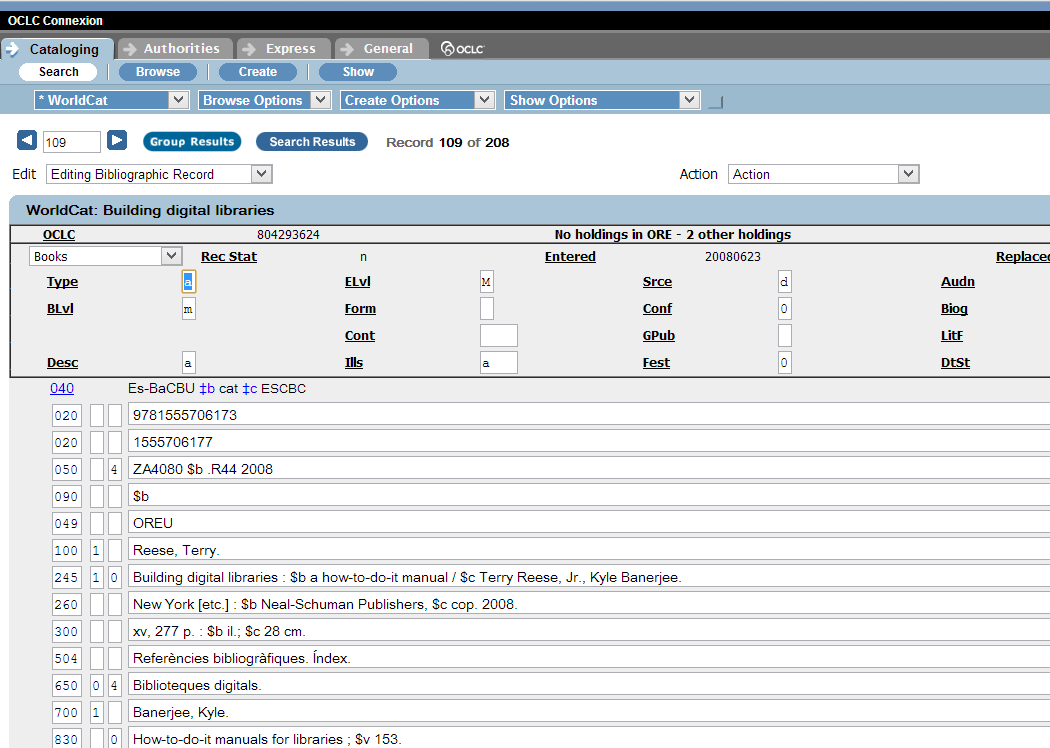In This Chapter:
- Can MarcEdit Help Me?
- Getting Started
- Installing MarcEdit
- Other Downloads
Can MarcEdit Help Me?
One of the most common questions posed by potential MarcEdit users is around the scope of the application. Technical services and metadata librarians utilize a lot of different tools to edit, create, and manipulate their metadata…how is MarcEdit different and what does it offer that other tools might not? It’s a great question…technology is changing rapidly and the library metadata environment is currently in a state of flux. Understanding what MarcEdit does and does not do can help a potential user determine if the tool is worth investing the time and effort to learn. So exactly what is MarcEdit used for?
MarcEdit initially was conceived as a suite of tools to simplify the editing, creation, and manipulation of MAchine Readable Cataloging[ref]U.S. Library of Congress MARC Standards, http://www.loc.gov/marc/[/ref] (MARC) records. Developed in the late 1960’s, libraries have almost universally utilized the MARC record format to create and transfer bibliographic metadata between local systems and between libraries. The development of MARC provided a single, universal standard that allowed for the creation of regional, national, and international repositories of library bibliographic data. As libraries moved online, the availability of MARC data from repositories like the U.S. Library of Congress or OCLC [ref]OCLC Homepage, http://oclc.org/home.en.html[/ref] helped to facilitate the process. Libraries developed communities of practice around metadata description, and distributed the work of creating bibliographic descriptions for materials found in the library. Description rules like the Anglo-American Cataloging Rules and subsequent editions, the U.S. Library of Congress Rule Interpretations, the current work being done to create the Resource Description and Access (RDA) model, all have contributed in shaping the library communities shared metadata environment.
So what is a MARC record anyway? I think that this is a good question because librarians often conflate the word to include not only the physical standard, but also the various rules and interpretations that are used to describe how data is marked up in a record. Unfortunately, for the purposed of MarcEdit, this overly broad description isn’t particularly helpful. MarcEdit is often described as being MARC agnostic because it limits its definition of MARC to the physical standard, and leaves the application of descriptive rules to the user. This allows MarcEdit to work with bibliographic data in multiple flavors of MARC because the application does not expect specific data, like authors, titles, main entry to be in any one particular data field. This allows the tool to work in many environments and provide metadata that can be read by any library system that can process the MARC record format.
For a lot of librarians (and honestly, library applications), the MARC record is something that looks like Figure 1.
Many systems and tools have been designed in a way that they are unable to separate the physical presentation of a bibliographic record from the physical format. Figure 1 provides a screen shot from OCLC’s Connexion interface, and would be an interface that metadata librarians would be familiar. The problem is that this is what many librarians associate with MARC — they see this display, the tags and their inherent meanings with the AACR2 rules, and conflate the two together. For MarcEdit’s purposes, MARC is used to describe the binary format, as seen in Figure 2.
